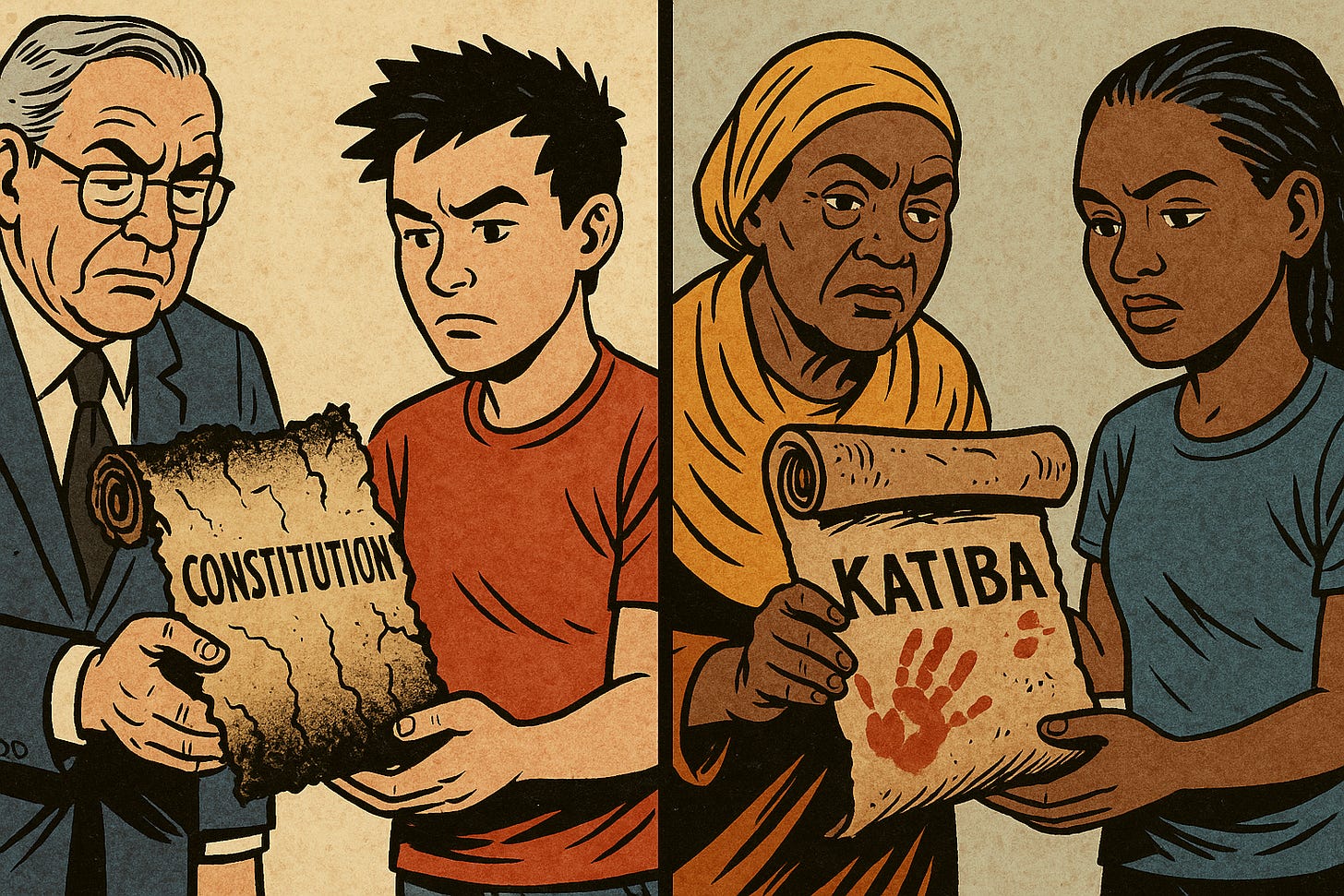
This past August, I wrote about the U.S. Constitution and how it hasn’t been amended in over thirty years. This is the second-longest constitutional pause in our nation’s history. The last amendment? A leftover from 1789 that was finally ratified in 1992, this measure was intended to delay congressional pay raises until after elections. Hardly the kind of democratic upgrade you put in a museum display. And yet, it feels emblematic of the era that followed: decades of institutional inertia, partisan gerrymandering, and a Congress more interested in preserving power than modernizing the machinery of governance.
Meanwhile, the ground beneath that machinery trembles. The U.S. now lives through a constitutional silence so long that it has become existential. We speak of the Constitution as a “living document,” yet it breathes only when it serves power, not people. While campaign finance rules are being gutted, climate crises are multiplying, and voting rights are eroding under judicial review, the foundational document sits like a perfectly preserved fossil, technically intact, but functionally brittle.
But America isn’t the only democracy suffering from constitutional calcification. Tanzania, halfway across the globe and worlds apart in political culture, is also trapped in a long, slow-motion constitutional crisis, though its recent history reads more like a political thriller.
In 2011, under President Jakaya Kikwete, Tanzania launched an ambitious reform of its 1977 Constitution. The idea was to align it with contemporary democratic norms: more checks on executive power, stronger rights for citizens, and a clearer structure for the Union between mainland Tanganyika and the semi-autonomous Zanzibar. The Constitutional Review Commission, led by Judge Joseph Warioba, conducted extensive public consultations.
People participated, and hope stirred.
By 2013, two draft constitutions had been released. The second draft proposed a bold structural change: a three-government system. One for the Union, one for Zanzibar, and, finally, one for Tanganyika itself. For many Zanzibaris, long resentful of being governed by a Union that spoke with a mainland accent, this felt like long-overdue recognition.
Then came 2014. The ruling party, Chama Cha Mapinduzi (CCM), still clinging to its one-party roots despite the appearance of multiparty democracy, dominated the Constituent Assembly. When the three-government structure gained traction, CCM rejected it outright. The opposition coalition, UKAWA, walked out. The final version of the Proposed Constitution was passed without meaningful dissent. The public referendum? Never held. Reform became ritual. Democracy became performance art.
After the reform effort died, Tanzania entered a darker era. President John Magufuli came to power in 2015 and swiftly turned the state apparatus into a tool of hard authoritarianism. Opposition rallies were banned. Journalists jailed. Elections turned theatrical. By the time Magufuli died in office in 2021, the Constitution was little more than a stage prop.
His successor, President Samia Suluhu Hassan, initially signaled openness and liberalization. For a moment, it seemed the reform spirit might return. But once her government faced real dissent, particularly from youth-led protests and growing unrest in Zanzibar, the response hardened. Opposition leader Tundu Lissu, previously shot in 2017, was imprisoned again amid vague charges and disappeared into the judicial fog. The internet was shut down. Kenyan rights groups had to smuggle footage of dead bodies to AFP just to break the blackout. Reports emerged alleging that the President’s son was involved in organizing disappearances.
Let that sink in. A government attempting constitutional reform a decade ago is now being accused of carrying out coordinated abductions under the digital cover of night.
You may be thinking, “Well, that’s Tanzania. The U.S. is different.”
And yes, structurally, historically, culturally—the two nations are distinct. But here’s the quiet part out loud: both are exhibiting signs of democratic drift rooted in constitutional sclerosis.
In the U.S., the presidency stretches its powers like yoga pants during the holidays. Congress shrinks from its responsibilities, content to stage performative hearings while billionaires bankroll campaigns. The Senate, a minoritarian relic, deepens the democratic deficit, while the Supreme Court increasingly acts as an unelected constitutional council with lifetime tenure and a taste for revoking rights.
Meanwhile, Gen Z inherits a nation where school shootings are routine, climate collapse is accelerating, and the Constitution is cited more as a defense against progress than a roadmap for it.
Tanzanian youth, on the other hand, face joblessness, state repression, and a ruling party that long ago fused with the state. What passes for a multiparty system is often a managed illusion, enforced with hard power when the illusion begins to crack. Protest is answered with bullets. Dissent, with blackouts.
Both systems have stopped evolving. Both claim to be democracies. But if a democracy cannot update its foundational rules when those rules begin to harm rather than help, is it still a democracy, or just a ceremony?
This isn’t a call for nihilism. It’s a call to recognize a pattern. Constitutional stagnation is not just a technical problem. It’s a spiritual one. When the rulebook becomes a shackle, the game stops being fair. And when those shackles remain untouched for decades, people stop believing reform is possible.
America’s constitutional silence may not end in a blackout. But it might end in a slow fade. Tanzania’s silence was punctuated by screams no one could livestream. Both, in their own way, tell us that liberal democracy isn’t dying from a blow. It’s dying from a refusal to adapt.
If the oldest modern democracy and a postcolonial republic, vastly different yet eerily similar in their democratic paralysis, can both find themselves here, then maybe the real question isn’t whether liberal democracy is dying.
Maybe it’s this:
What comes after a living document dies?







